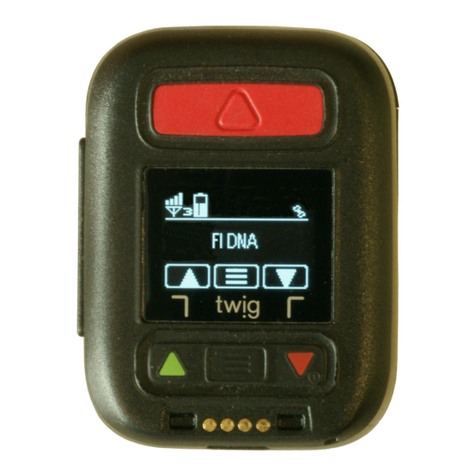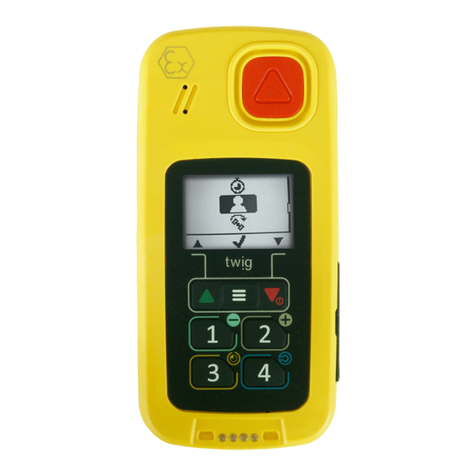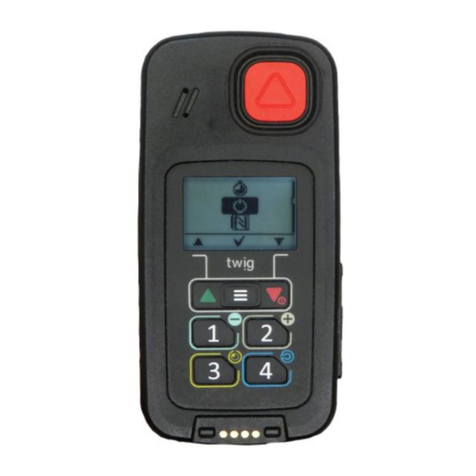HANDLING AND MAINTENANCE
NOTE: The instructions below apply to the device, its accessories,
batteries in use as well as batteries taken out of use.
•Dust and dirt may damage the moving parts of the device. Do not use or
keep the device in dusty or dirty surroundings.
•Do not open the device or battery by yourself or pierce holes in it.
•Rough handling may break the circuitry inside the device. Do not drop,
knock, twist or shake the device or its battery.
•Keep the device dry. Liquids contain minerals which could corrode
electronic circuits. If the device gets wet, turn it off and dry the device and
the battery immediately. Put the device into an upright position and let it
dry. It is recommended that a reseller or service personnel check that the
device functions properly.
•Even though the device is waterproof, do not wet the device
unnecessarily or immerse it in water.
•Protect the device from heat. High temperatures may shorten the life of
the electronical devices, melt or warp plastics and damage batteries. Do
not warm up the device or battery or use it near fire.
•Do not short-circuit the battery or battery contacts. Exposing the metal
strips of the battery to a close contact with a metallic object, such as a
coin, a clip or a set of keys can cause accidental short-circuiting and
damage the battery.
•Charge and recharge the battery only with the charger specified in the
Operating instructions/Quick Guide. Use the battery only for the purpose
it is intended.
•Clean the device with a soft cloth, dampened slightly with mild soapy
water. Do not clean the device with harsh chemicals, solvents or other
corrosive substances.
•Only allow service personnel authorised by the reseller to repair the
device.
SAFETY AND PRECAUTIONS
TELEMATICS PROTOCOL
MPTP (Mobile Phone Telematic Protocol) allows, among other things,
tracking of the device over the SMS communication. Automatically sent
telematics messages are only allowed to authorised numbers configured in
the device. Such numbers can be, e.g. emergency and service center
numbers. Position of the device is retrieved by the GPS*, or by the network
parameters -the latter is a network-dependent service. The carrier for
telematics messages is an SMS-message. Deliveries of all messages is
fully handled by and in the responsibility of the GSM network operator and
services can vary substantially. The charge of a protocol message is
determined on the contract by the service provider.
GNSS/GPS*
The Global Positioning System (GPS) is operated by the government of the
United States, which is solely responsible for its accuracy and
maintenance. The system is subject to changes that could affect the
accuracy and performance of all GPS equipment.
EMERGENCY CALLS
The device is an aid and should never be relied upon as an only
emergency device. Its functionality is dependent on GSM network and
GPS satellites which may not be available all the time. To make
emergency calls, the device must be turned on and located in an area with
adequate GSM network signal strength.
Making an emergency call also requires GPS satellite coverage and a valid
SIM-card. Emergency calls may not be possible on all GSM phone
networks or when certain network services or phone features are in use. In
unclear cases, consult the network operator.
TWIG POINT NETLOC COSTS
The first year of TWIG Point Netloc is free of charge. Please note: TWIG
Point Netloc is not working if the service renewal payment is not made after
the first year free of charge. Twig Com Ltd. does not take any
responsibility of any consequences due to a delay or non-payment
of the TWIG Point Netloc service use after the first year free of
charge.
GENERAL
•Traffic: Strictly adhere to all eventual European and national
legislation and also honour other eventual safety
recommendations when using the device while driving a vehicle.
Place the device in its holder, do not leave it on the passenger
seat or some other place where it can break loose in a collision or
a sudden stop. When receiving a call in an awkward driving
situation, you must always put safety before other priorities and
courtesy. If you feel uncomfortable about using a device while
driving, you should not use it.
•Vehicles with air bags: An air bag inflates with great
force. Do not place objects, including either installed or portable
wireless devices, in the area over the air bag or in the air bag
deployment area.
•External alert: The use of the alert device to operate a
vehicle´s lights or horn on public roads is not permitted.
•Children: Keep the device and its accessories away from small
children to avoid causing injury to themselves or others. Damage
to the device or its accessories is also thus avoided.
•Power supply: This equipment is intended for use with the
specified power supplies listed in the Quick Guide/Operating
Instructions. Any other usage will invalidate any approval given to
this apparatus and may be dangerous.
•Other accessories: Any other accessories used should
also be approved by the device manufacturer. Check the
compatibility of new power supply units and other accessories at
the reseller or manufacturer.
•Connections: All installations, connections and service
regarding the device, its power supply and accessories should be
approved by the device manufacturer. Use of any unauthorized
accessories, modifications or attachments may be dangerous and
voids the device warranty if said accessories cause damage or a
defect to the device.
•Magnetic fields: The device contains small magnetic
components. Even though the magnetic fields of the components
are weak, they might damage magnetic cards, such as bank and
credit cards. We recommend that you would keep the device away
from magnetic cards.
•Storing positions: Position information is stored correctly in
the device when the GPS* is turned off (from the GPS menu) or
powered off (by pressing the END key). To prevent the memory
from becoming corrupted, never power off the device by removing
the battery.
•Neodymium magnets: Some models include strong
magnets. Magnets could effect the functioning of pacemakers and
implanted heart defibrillators. If you wear these devices keep
sufficient distance to magnets. Warn others who wear these
devices from getting close to magnets. Keep magnets away from
devices and objects that could be damaged by magnetic fields.
•Real-time monitoring
A continuous real-time monitoring may lead to over-heating of the
device and shut it down.
•ManDown++ impact
ManDown++ impact function doesn’t work if the device is hitting the body
when carried freely e.g. with pendant, ID badge holder and hook.
RADIO FREQUENCY (RF) ENERGY
•Aircrafts: Turn your device off before boarding any aircraft and do not
use the device while in the air. Besides being illegal, the use of a device
in an aircraft may endanger the operation of the aircraft or disrupt the
mobile network. Failure to comply with this instruction may lead to
suspension or denial of mobile phone services, and possibly even legal
action.
•Hospitals: Turn your device off before entering hospitals or other
health care facilities where medical electronic equipment may be in use.
Such devices can be extremely sensitive to radio frequency interference.
Only use the device with permission and under the instruction of hospital
staff.
•Medical devices: Remember that any personal medical devices
(such as hearing aids or pacemakers) may be affected by RF energy if
they are not adequately shielded. Consult the manufacturer or vendor of
the equipment to determine the proper shielding.
•Posted facilities and country-specific regulations:
Power off the device in any facility where posted notices require to turn
off mobile phones. Also follow all the country-specific regulations
applicable to where the device is used.
•Potentially explosive atmospheres: Turn off the device at
refuelling points, e.g. gas stations. Also observe restrictions on the use of
radio equipment in fuel depots, chemical plants or where blasting
operations are in progress because remote control RF devices are often
used to set off explosives. Do not store or carry flammable liquids, gases
or explosive materials in the same compartment as the device, its parts
or accessories.
•Other electronical equipment: Using the device may cause
interference with a vehicle's electronic equipment if it is not adequately
shielded. Consult the manufacturer or the vehicle seller to determine the
proper shielding.
•Computers: Remember that using the device close to a computer
may cause interference. When using your device near such equipment
keep a distance of about one meter.
•Body parts: When the device is in operation do not touch the
antenna with eyes, mouth or bare skin to guarantee proper function.
WARRANTY
Twig Com Ltd. warrants to the original purchaser (“Company”) that this
Twig Com device and all accessories originally provided by Twig Com in
the sales package (“Product”) are free from defects in materials, design
and workmanship under normal use in accordance with the operating
instructions and pursuant to the following terms and conditions. Warranty
periods are determined with the purchase agreement
Individual warranty terms and conditions are available from Twig Com or
from local distributor. The warranty is void if the device is opened or the
warranty seal on the screws are tampered.
*Some product versions only.
























